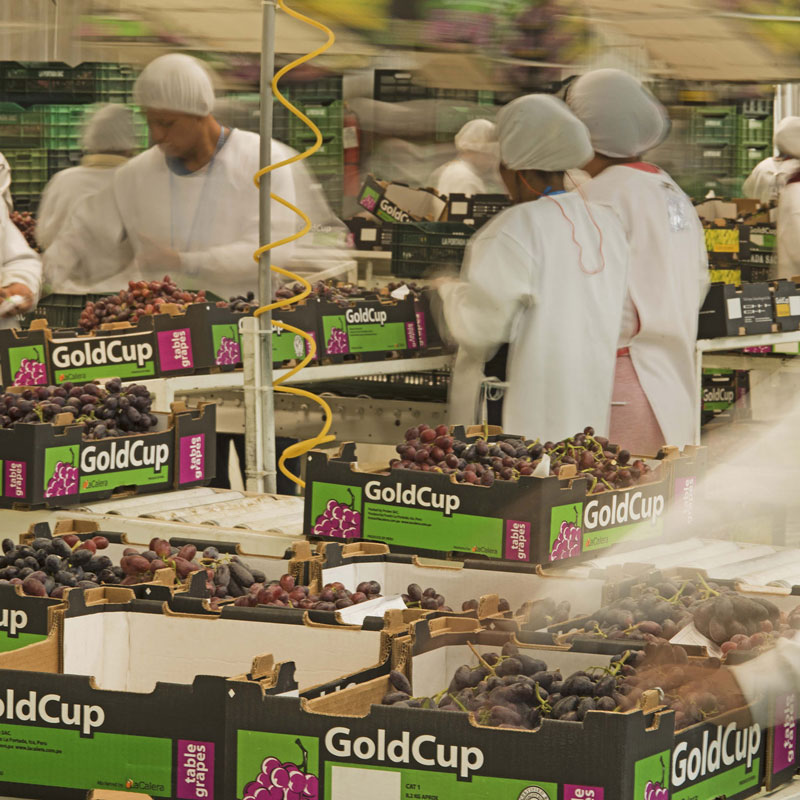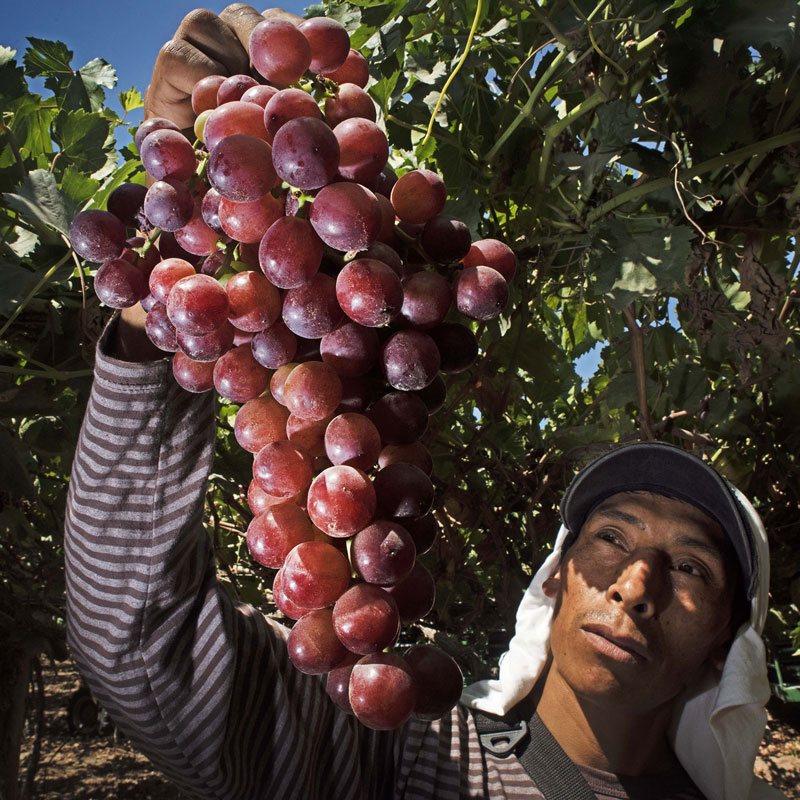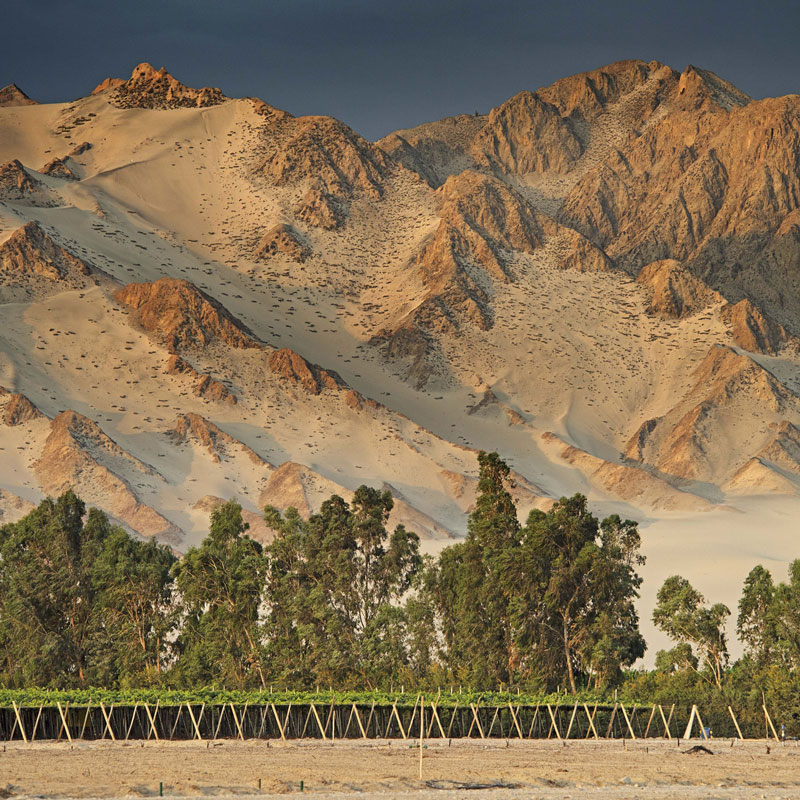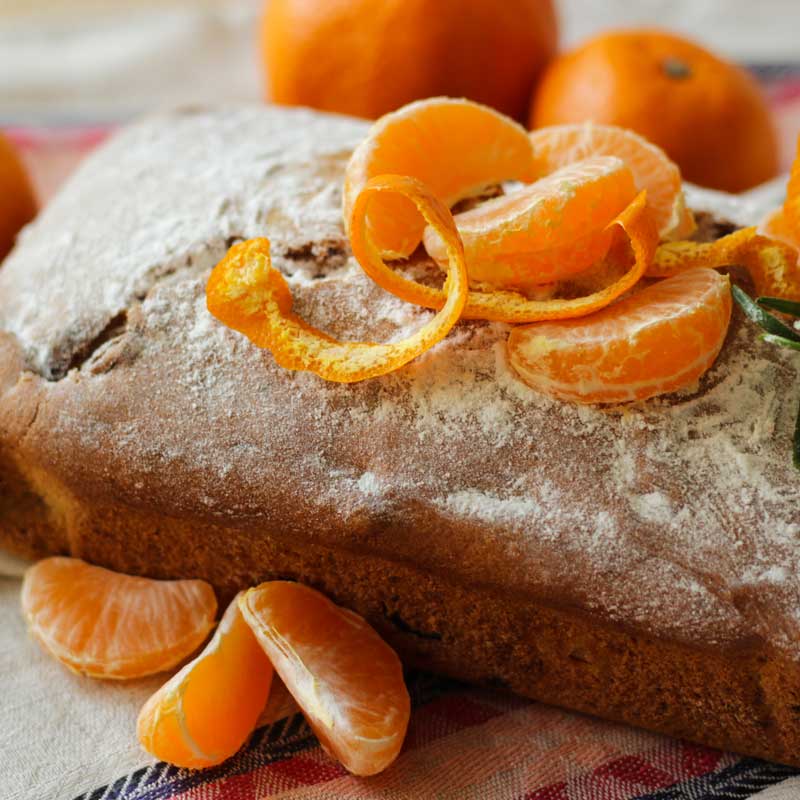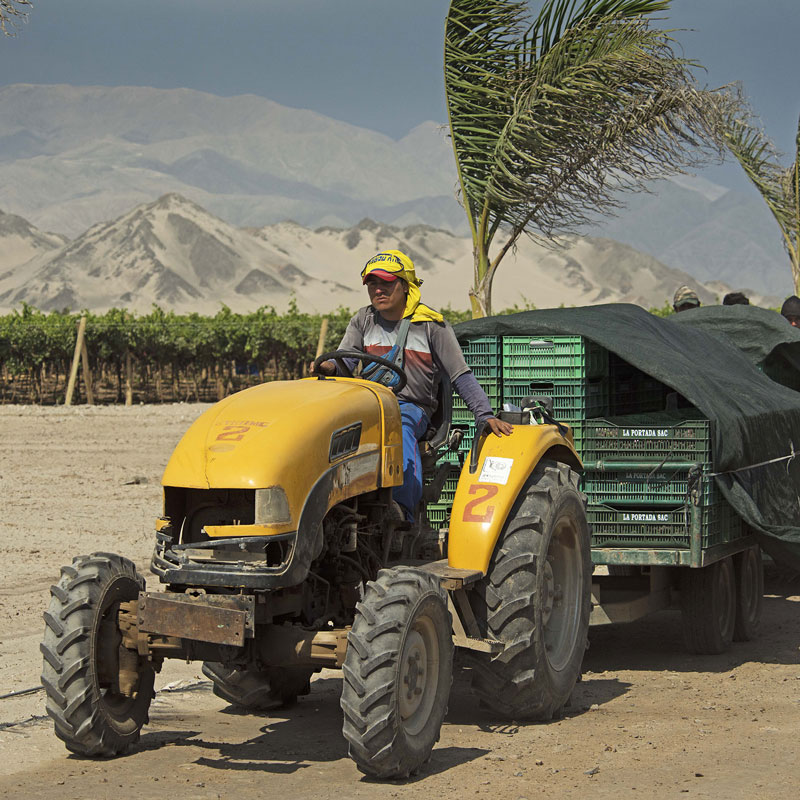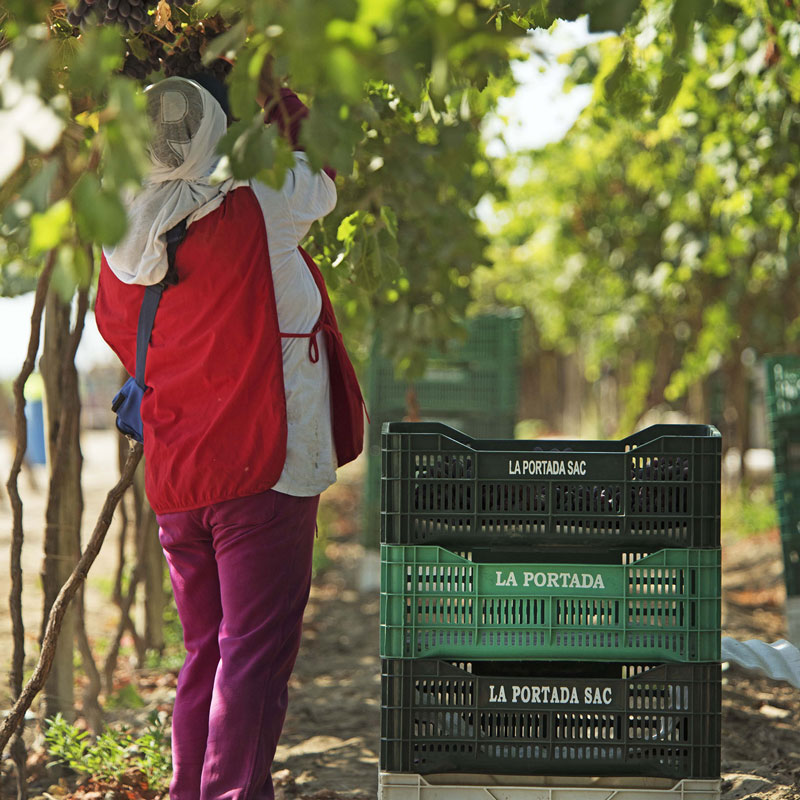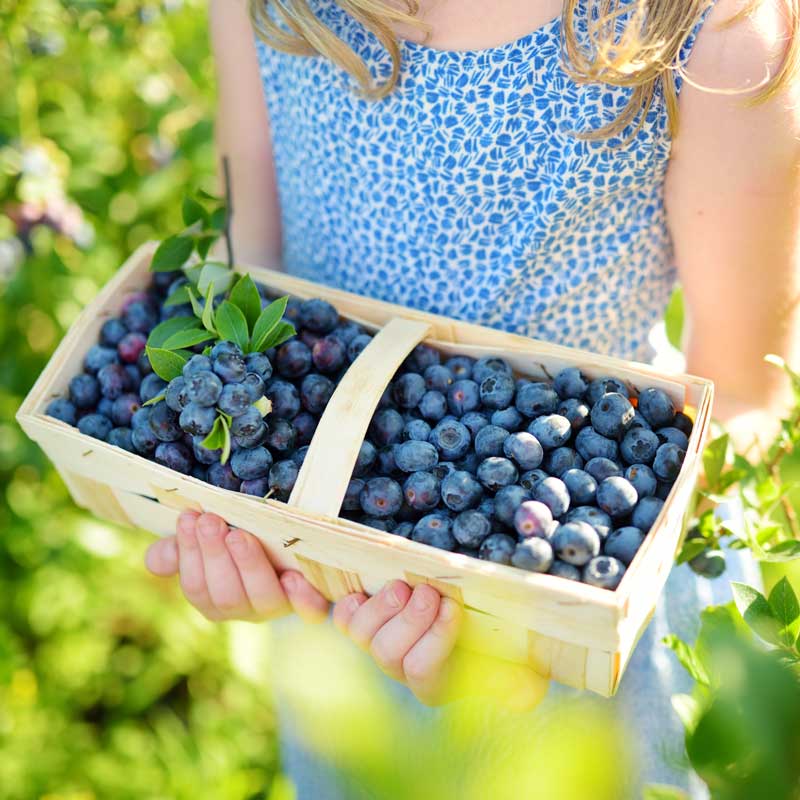Fundacion La Calera works closely with the government in the area of Chincha.

Foundation & Green

About our foundation
Since 1973, social care has been provided at La Calera targeting mainly housing, child and youth development, and disabled and elderly support, in order to improve the communities’ well-being. Fundacion La Calera was officially created in 2015 to meld all the individual social developments into a formal institution.
Fundacion La Calera works together with local entities, government, and strategic allies, to build the best place to live in the area of Chincha. We believe in changing our community through education. Our goal is to build the foremost education possible for the children of Chincha.
Learn more about our foundation, visit their website:
schools
People
Young Students
Teachers
schools
People
Young Students
Teachers
Main Programs

NURSERIES
FLC supports 8 nurseries in the Chincha area, with over 100+ children aged 1-3 attending daily.
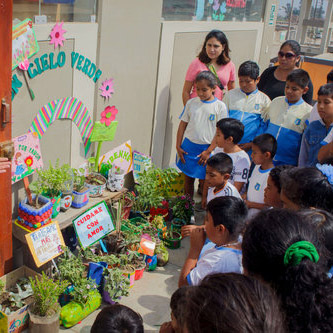
TINI
In coordination with ONG ANIA, moral values are imparted to 1,600 elementary students in 18 schools in Alto Laran area.
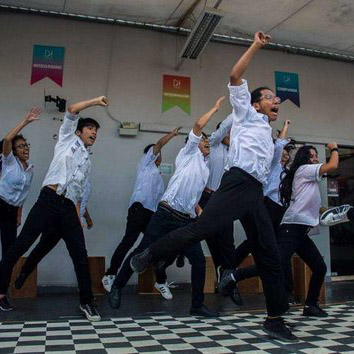
PFI
In collaboration with D1-Dance and with the direction of Vania Masias, over 200 high-school kids are trained in leadership and entrepreneurial skills. Ten scholarships are granted per year to emphasize leadership education.
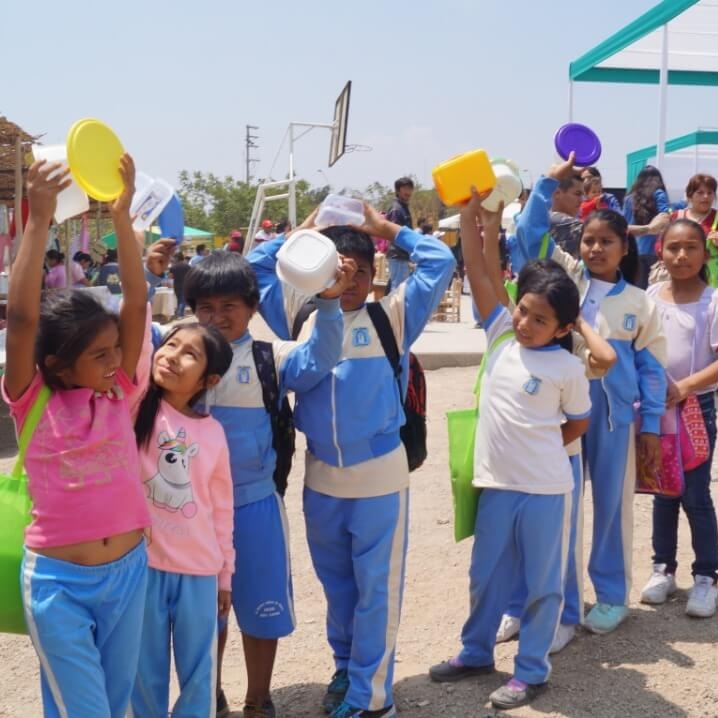
EDUCATION QUALITY
Over 100+ teachers in the Alto Laran district are supported and monitored for better educational practices.

ELDERLY SUPPORT
130+ elderly people are nourished and integrated to our community through volunteering in FLC social programs.

NURSERIES
FLC supports 8 nurseries in the Chincha area, with over 100+ children aged 1-3 attending daily.

TINI
In coordination with ONG ANIA, moral values are imparted to 1,600 elementary students in 18 schools in Alto Laran area.

PFI
In collaboration with D1-Dance and with the direction of Vania Masias, over 200 high-school kids are trained in leadership and entrepreneurial skills. Ten scholarships are granted per year to emphasize leadership education.

EDUCATION QUALITY
Over 100+ teachers in the Alto Laran district are supported and monitored for better educational practices.

ELDERLY SUPPORT
130+ elderly people are nourished and integrated to our community through volunteering in FLC social programs.
Social Responsability
The housing project of CasaGrande is unique. It started from a disaster in 2007, August 15th, when a 8.0 magnitude earthquake hit our town, and many people perished and houses fell. La Calera decided to take action and built 540 homes for our workers.
MAIN BENEFICIARIES
2000+ people
Now live in these homes. They were sold to our workers at a very low price, subsidized by La Calera and a government grant that that achieved a 10x value over the price paid
Main Programs

CASA GRANDE
Is located in the outskirts of Chincha, in the district of Alto Laran. La Calera created Casagrande to build 540 houses 750 sq-ft each for our workers in 2010.

CASA GRANDE
Is located in the outskirts of Chincha, in the district of Alto Laran. La Calera created Casagrande to build 540 houses 750 sq-ft each for our workers in 2010.

THROUGH OUR EVERYDAY WORK, WE TRANSMIT OUR LOVE AND CARE TO THE LAND, TO THE TREES AND TO THE FRUIT THEY BEAR.
La Calera Green
Driven by efficiency, we have learned to give our orchards all the care they need, and in return we prosper together.
Through time, we have pushed the rod of efficiency, learning to work with the land and the living beings we care for every day. This has led to an integrated and balanced system that works to improve itself.
Million m3 Biogas / year
ha of new green desert land
Tons of Recycled paper / month

01. Desert Irrigation
Over 2,400 hectares of new orchards have been planted over barren desert land, creating an oasis of life in the middle of the Atacama Desert: the ‘driest place on earth’. That is over 1.2 million newly-planted trees creating new life biomes using drip irrigation systems that save water.
02. Recycled Waste Water Irrigation
Farming the Atacama desert demands water, and we use all the water sources available to us. One of them is the treated waste water. We intake this water, re-treated to international standards for agricultural and recycle it’s usage by inject it into our irrigation systems, thus creating new orchards and new life on desert lands, where there was only sand a few years ago. This waste water that would eventually end in the Pacific Ocean is recycled back into generating green life on desert land.

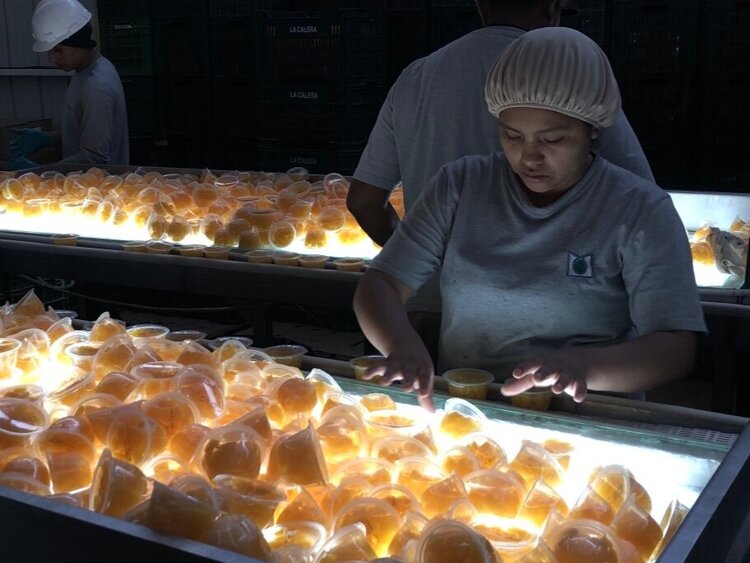
03. Mandarin Segments
We want to be efficient with our fruit! The most beautiful mandarins are exported as fresh produce, the ones that are ‘ugly’ on the outside, but still have a heart of gold, are processed into mandarin segments that are placed into cans or plastic cups. With nothing more than a simple process of pasteurization (heat), they gain 18 to 24 months of shelf life. The ‘ugly’ mandarins are peeled, segmented, and pasteurized in our facility to be exported as processed mandarin segments, thus making our crop more efficient and lessening our overall fruit waste.
04. Mandarin Peel Recycling
The mandarin peels (rinds) that come out of the processing facility are recycled into life through the making of Compost. Compost is a balanced organic fertilizer, combining Nitrogen (N) and Carbon (C) into a 1:10 ratio. The mandarin peels are mixed with chicken manure from our egg farms, then fermented over 3 to 4 months to turn this mixture into the final compost. Compost is used in our nursery and also applied to all our fields, supplying a large proportion of nutrients and reducing the use of chemical fertilizers. Compost is filled with with living beneficial bacteria (organic components) that interact with the roots of our trees in a positive way.
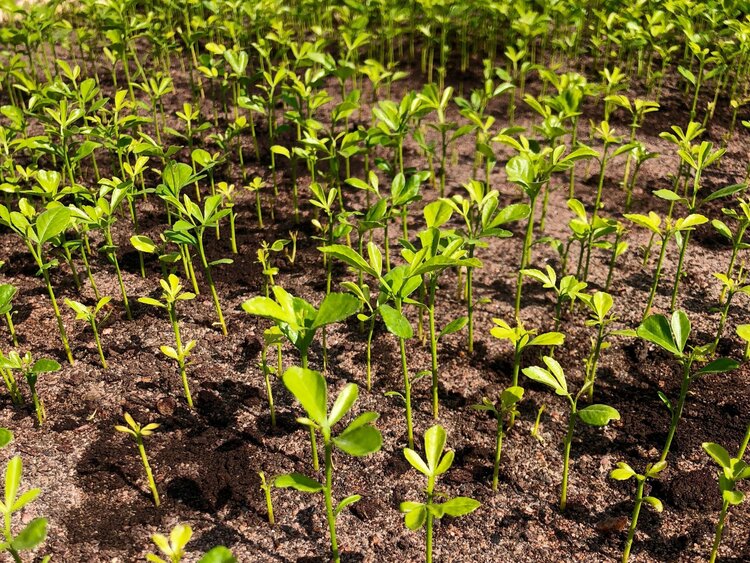


05. Water Efficiency
By using high tech sensor systems in our orchards we are being more in the use of water for irrigation. The use of sensors in and around the tree, help us understand better the water demands of the trees. We now listen to what the trees are telling us is a sort of way. By using drones with different light spectrum cameras, water sensors in the soil, dendrometers in the trunk of the trees, leaf water potential readers, fruit size sensors, and an array of electronic sensors reading what is going on, we are abel to be much more efficient in the use of water.
06. Solar Power
La Calera has already started to generate solar energy through solar panels to power water irrigation pumps; 260 kw-h have been installed already and we plan to increase to 1,200 kw-h (that is 1.2 Mw-h) in the next year.
We initially installed the electrical panels in a remote area, were there is no energy grid and it works fine, but we have now the ambition to build a big solar panel complex to inject electricity into our grid and thus be even more efficient.



07. Integrated Pest Management (IPM)
IPM is the use of beneficial insects and/or fungi to fight back the negative pests that occur in the orchards, thus, reducing the use of pesticides. La Calera has 8 IPM farms along all its farms – where beneficial insects and fungi are bred. In each IPM farm we produce specific beneficial insects or fungi to control specific pests, suppressing their populations and keeping pesticides to a minimum. La Calera produces Thrichoderma sp, Sympherobius sp, among other pest controllers.
08. Methane Gas Production
Since 1997 La Calera produces methane (CH4) gas as an energy source. Part of the chicken manure is used to generate biogas. The manure is mixed with water, and kept at body temperature in an anaerobic environment inside the biodigestors, where bacteria ferment the manure into methane gas. This is a controlled system where the gas is filtered and then burned into generating electricity. The CH4+O2 is turned into CO2 + H2O. The CO2 being 24 times less damaging to the environment than the methane to the environment.


01. Desert Irrigation
Over 2,400 hectares of new orchards have been planted over barren desert land, creating an oasis of life in the middle of the Atacama Desert: the ‘driest place on earth’. That is over 1.2 million newly-planted trees creating new life biomes using drip irrigation systems that save water.

02. Recycled Waste Water Irrigation
Farming the Atacama desert demands water, and we use all the water sources available to us. One of them is the treated waste water. We intake this water, re-treated to international standards for agricultural and recycle it’s usage by inject it into our irrigation systems, thus creating new orchards and new life on desert lands, where there was only sand a few years ago. This waste water that would eventually end in the Pacific Ocean is recycled back into generating green life on desert land.

03. Mandarin Segments
We want to be efficient with our fruit! The most beautiful mandarins are exported as fresh produce, the ones that are ‘ugly’ on the outside, but still have a heart of gold, are processed into mandarin segments that are placed into cans or plastic cups. With nothing more than a simple process of pasteurization (heat), they gain 18 to 24 months of shelf life. The ‘ugly’ mandarins are peeled, segmented, and pasteurized in our facility to be exported as processed mandarin segments, thus making our crop more efficient and lessening our overall fruit waste.

04. Mandarin Peel Recycling
The mandarin peels (rinds) that come out of the processing facility are recycled into life through the making of Compost. Compost is a balanced organic fertilizer, combining Nitrogen (N) and Carbon (C) into a 1:10 ratio. The mandarin peels are mixed with chicken manure from our egg farms, then fermented over 3 to 4 months to turn this mixture into the final compost. Compost is used in our nursery and also applied to all our fields, supplying a large proportion of nutrients and reducing the use of chemical fertilizers. Compost is filled with with living beneficial bacteria (organic components) that interact with the roots of our trees in a positive way.


05. Water Efficiency
By using high tech sensor systems in our orchards we are being more in the use of water for irrigation. The use of sensors in and around the tree, help us understand better the water demands of the trees. We now listen to what the trees are telling us is a sort of way. By using drones with different light spectrum cameras, water sensors in the soil, dendrometers in the trunk of the trees, leaf water potential readers, fruit size sensors, and an array of electronic sensors reading what is going on, we are abel to be much more efficient in the use of water.

06. Solar Power
La Calera has already started to generate solar energy through solar panels to power water irrigation pumps; 260 kw-h have been installed already and we plan to increase to 1,200 kw-h (that is 1.2 Mw-h) in the next year.
We initially installed the electrical panels in a remote area, were there is no energy grid and it works fine, but we have now the ambition to build a big solar panel complex to inject electricity into our grid and thus be even more efficient.


07. Integrated Pest Management (IPM)
IPM is the use of beneficial insects and/or fungi to fight back the negative pests that occur in the orchards, thus, reducing the use of pesticides. La Calera has 8 IPM farms along all its farms – where beneficial insects and fungi are bred. In each IPM farm we produce specific beneficial insects or fungi to control specific pests, suppressing their populations and keeping pesticides to a minimum. La Calera produces Thrichoderma sp, Sympherobius sp, among other pest controllers.

08. Methane Gas Production
Since 1997 La Calera produces methane (CH4) gas as an energy source. Part of the chicken manure is used to generate biogas. The manure is mixed with water, and kept at body temperature in an anaerobic environment inside the biodigestors, where bacteria ferment the manure into methane gas. This is a controlled system where the gas is filtered and then burned into generating electricity. The CH4+O2 is turned into CO2 + H2O. The CO2 being 24 times less damaging to the environment than the methane to the environment.
FROM FARM TO THE FINAL CUSTOMER
